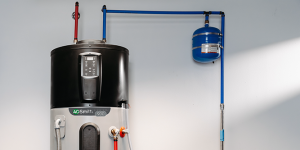As college boards across the country wrap up their fiscal year, many universities are releasing data on how much tuition will cost in the fall. In a decade where the cost of higher education has outpaced nearly every other expense, the 2023–2024 academic year promises to be no different. For many families, red-hot education expenses could be a major blow to their personal finances.
Fall 2023 forecast
If your favorite university is raising prices, it’s not alone. In fact, private and public schools across the country are asking students and their families to pay more this fall.
Private universities can’t rely on government funding to bolster their bottom lines. It will come as no surprise that a degree from these schools will cost a bundle — and that’s not changing anytime soon. Harvard has increased its tuition by a little over 3% for the fall semester. Meanwhile, Stanford is asking students to pay 7% more in tuition for the 2023–2024 academic year.
Public universities typically offer a more affordable option for college, but tuitions at these institutions are similarly on the rise. Freshmen at the University of Michigan can expect to pay 3% more in tuition than last year’s Wolverines. Likewise, the University of California at Berkeley is raising tuition by about 4.4% this year. For a degree that can cost over $100,000, even a slight rise in tuition costs can add up to thousands over a four-year program.
Inflation to blame?
Between 1999 and 2020, the cost of higher education increased by an average of 6.8% per year. Such a prolonged period of increasing expenses has more than doubled the price tag of a college degree since 1999.
Many universities preempt tuition increases with a nod to rampant inflation in the not-so-distant past. It’s worth noting that colleges operate like businesses. When the cost of labor — in this case for administrators, professors, and staff — increases, so does the cost of running the “business” of academia. However, inflation, which typically hovers around 2%, falls short of accounting for a nearly 7% annual increase in tuition over the last twenty years.
One possible factor could be so-called “student services,” spending that grew by almost 30% between 2010 and 2018. It’s unclear where a bulk of this spending goes at many universities, but the student services category broadly includes everything from career counseling to coed activities. With many campuses boasting multi-million dollar amenities such as recreation centers and football fields, some families are concerned that the money they’re paying to send their student to school isn’t going to a higher quality of education.
Building a plan
When it comes to the rising cost of higher education, the savings accounts of many Americans just can’t keep up. It’s more important than ever for students and their families to have a plan to make college more affordable. Here are a few options to consider.
- Many universities offer financial aid support to students, helping those with severe financial need understand available aid programs and connecting students with scholarship and grant opportunities.
- Regional tuition exchange programs can qualify out-of-state students for discounted tuition at colleges nearby. The National Association of Student Financial Aid Administrators maintains a list of these tuition discount programs.
- Earning an associate’s degree from a community college can allow students to complete their first two years of college at a fraction of the cost.
Higher education is often a great investment, but the price tag is making some reconsider. Over the past few decades, the cost of a college degree has jumped rapidly at universities across the country — and shows no signs of slowing. Funding a college education today is harder than ever, but with a well thought out plan, American students can better prepare for their future.
Alert: highest cash back card we’ve seen now has 0% intro APR until nearly 2025
If you’re using the wrong credit or debit card, it could be costing you serious money. Our experts love this top pick, which features a 0% intro APR for 15 months, an insane cash back rate of up to 5%, and all somehow for no annual fee.
In fact, this card is so good that our experts even use it personally. Click here to read our full review for free and apply in just 2 minutes.
Read our free review
Read the full article here














